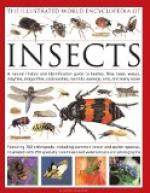Scorpions are common in hot countries: they are very bold and watchful: when any thing approaches, they erect their tails, and stand ready to inflict the direful sting. In some parts of Italy and France, they are among the greatest pests that plague mankind: they are very numerous, and are most common in old houses, in dry or decayed walls, and among furniture, insomuch that it is attended with, much danger to remove the same: their sting is generally a very deadly poison, though not in all cases, owing to a difference of malignity of different animals, or some other cause.
In the time of the children of Israel, scorpions were a plague in Egypt and Canaan, as appears by the sacred writings. See Deuteronomy, viii. 15, and other passages.
ANTS.
[Illustration]
’Who can observe the faithful ant,
And not provide for future want.’
These little animals have been for ages considered as patterns of industry: they were specially noticed by the wise king Solomon. He says, “go to the ant, thou sluggard, consider her ways, and be wise.” The ant lays eggs in the manner of common flies; from these eggs are hatched small maggots, or worms without legs; these, after a short time, change into large white aureliae, or chrysales, which are usually called ant’s eggs. When a nest of these creatures is disturbed, however great their own danger, the care they take of their offspring is remarkable: each takes in its foreceps, a young one, often larger than itself and carries it off.
These little insects form to themselves, with much industry and application, of earth, sticks, leaves, &c. little hillocks, called ant-hills, in the form of a cone: in these, they dwell, breed, and deposite their stores: they are commonly built in woody places: the brushy plains on Long-Island abound with them: they are from one to two feet in height.
HONEY-BEE.
[Illustration]
This is an extraordinary, curious, and remarkably industrious little insect, to which mankind are indebted for one of the most palatable and wholesome sweets which nature affords; and which was one of the choice articles with which the promised land was said to abound.
In every hive of bees, there are three kinds; the queen, the drones, and the labourers: of these last, there are by far the greatest number: and as cold weather approaches, they drive from the hives and destroy the drones, that have not laboured in summer, and will not let them eat in winter. If bees are examined through a glass hive, all appears at first like confusion: but, on a more careful inspection, every animal is found regularly employed. It is very delightful, when the maple and other trees are in bloom, or the clover in the meadows, to be abroad and hear their busy hum.
“Brisk as the busy bee among learning’s
flowers.
Employ thy youthful sunshine hours.”




